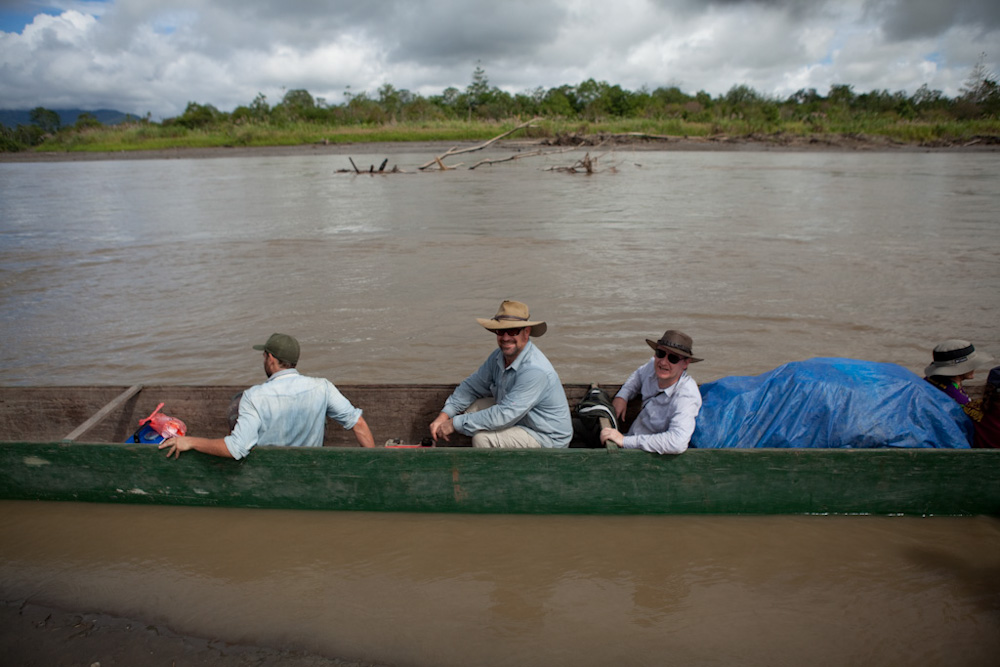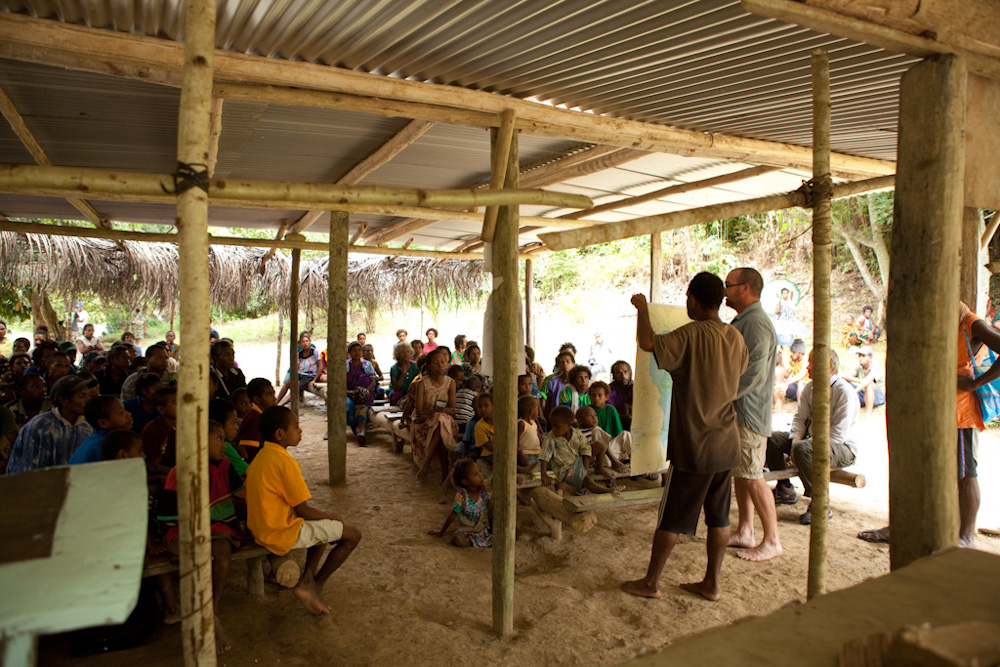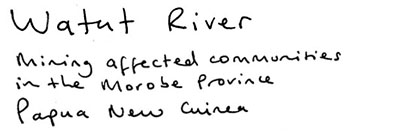FIELD AND SITE INVESTIGATION – APRIL 2012
As part of the larger MPI project, the authors travelled with a multi-disciplinary team to the Morobe Province in April 2012. This in turn built on earlier visits in 2011 and ongoing engagement with community representatives. The field component focused on the areas outside of the mine-site MOA, seeking information and views about impacts relating to riverine sedimentation and pollution.Access to the lower Watut River was obtained using a local powered canoe that enabled the team to travel from the junction with the Markham River to Pekumbe, visiting at Chiatz, Uruf and Manaring along the way. The middle Watut was accessed from Sambio where the team visited communities at Upper and lower Sambio and Kapin as well as the Hidden Valley mine-site.

MPI EO Charles Roche and MPI Chair Dr. Gavin Mudd in the powered canoe on the Watut River, April 2012
While it was difficult to isolate mining related sedimentation from naturally occurring sources, it was clear that communities had suffered and remained concerned about ongoing and future impacts. For example the Village of Chiatz had to be relocated back from the river due to flooding associated with riverbed and channel changes from sedimentation. Other villages had lost food gardens and were concerned about the impact on fish and aquatic life relied upon for food (supported in Mete, 2012).
During discussions and village meetings it quickly became apparent that the communities wanted more information about the impacts of and response to sedimentation. Of concern to the authors was the lack of awareness communities had about ongoing exploration and the potential for additional, larger scale mining along or in the Watut River region. Nowhere was this more apparent than at Pekumbe, which is situated near the Wafi-Golpu deposit. Despite the noise of helicopters and the nearby drill crews, the community was unaware that decisions were being made about the future of their land and surroundings without their involvement or consent. Given the massive local impacts (sedimentation, turbidity, noise, outsiders) expected with the development of the Wafi-Golpu deposit and the long-term impact it would have on the viability of the Pekumbe community, this represented a gross breach of trust and inadequate consultation.
Rather than trying to translate community concerns into text for this report, the documentary was expanded to capture, at least in part, the views, dreams and concerns of community members. The documentary should be read as part of this report as well as providing valuable context for those not familiar with the region. Affected communities in the documentary make a compelling case for change in the way that mining and other development is undertaken in PNG. Change that sees communities involved in decision making about development that is relevant to their needs instead of dominated by the interests of the companies, shareholders and financiers from far away.

Howard Sindana, Community Outreach Worker, and Charles Roche, MPI Director, give a presentation to the Pukumbe community, Middle Watut, April 2012

